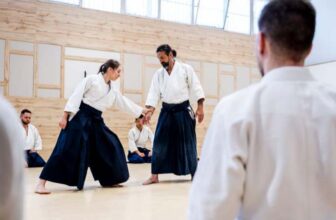
Kung fu is often seen as a physical art, a blur of motion, precision, and power. Yet beneath the surface lies an even greater challenge: mastering the mind. True practitioners know that every block, strike, and stance is guided not just by muscle memory but by mental clarity. Learning to think under pressure and remain calm in chaos is what transforms technique into mastery.
Reading the Fight: Strategy, Focus, and Flow
Every encounter in kung fu is a study in decision-making: read the opponent, anticipate patterns, manage risk, and keep emotion steady. That same disciplined mindset now shapes how many fans analyze combat sports online, where rhythm and timing matter as much as speed. In many ways, the mindset required in kung fu mirrors the focus and discipline needed in analytical pursuits outside the dojo; whether it’s managing risk, reading patterns, or keeping emotions in check, success depends on composure and strategy. As this thinking moves into digital arenas, bitcoin sports betting on combat events has encouraged deeper discussion of statistics, training styles, and fight psychology. Many platforms have grown popular for competitive odds, fast payouts, and generous bonuses, yet the real link is how both worlds reward clarity, timing, and mental control. In practice, it’s the same lesson as sparring: hold your center, see the opening, and act with calm precision.
Emotions Under Pressure
Anger, fear, and hesitation are the invisible opponents of any fighter. A single lapse in emotional control can shift the outcome of a sparring session or a tournament match. To counter this, kung fu training emphasizes awareness, noticing emotions before they dictate behavior. Breath control, mindfulness, and repetition anchor the body and mind, allowing practitioners to act with precision instead of reaction.
A good example is the Shaolin monks’ approach to conflict. Rather than suppress emotion, they channel it, turning fear into focus and aggression into energy. This emotional transmutation allows them to remain composed in the face of physical and psychological adversity.
Split-Second Choices and Calm Execution
In a fight, every millisecond counts. Should you strike, evade, or wait? These micro-decisions mirror the split-second judgments athletes and professionals make in high-stakes situations. The difference between panic and poise often comes down to training the nervous system to slow down under pressure.
Consider Bruce Lee’s famous principle: “Be like water.” He meant that adaptability, not rigidity , wins battles. By staying mentally fluid, a fighter can pivot without losing control. This mindset applies to any fast-changing situation, whether it’s in combat, competition, or daily life.
Building Long-Term Mental Discipline
Discipline in kung fu isn’t built overnight. It’s the result of consistent practice, reflection, and failure. Fighters often use post-training reflection to analyze not just their movements, but their mental states: when they lost focus, when they hesitated, when pride took over. This self-awareness becomes a loop of improvement.
In modern psychology, this aligns with “metacognition”, thinking about one’s thinking. Kung fu masters practiced it centuries before the term existed. By training awareness itself, they developed unshakable calm, even when facing chaos.
Conclusion: The True Arena Is the Mind
Physical strength fades, but mental discipline endures. Whether you’re a seasoned martial artist or someone facing everyday challenges, the principles of kung fu decision-making apply: stay calm, act with purpose, and train your focus daily. The real victory is not in defeating others, but in mastering yourself, the eternal combat that defines true kung fu.






